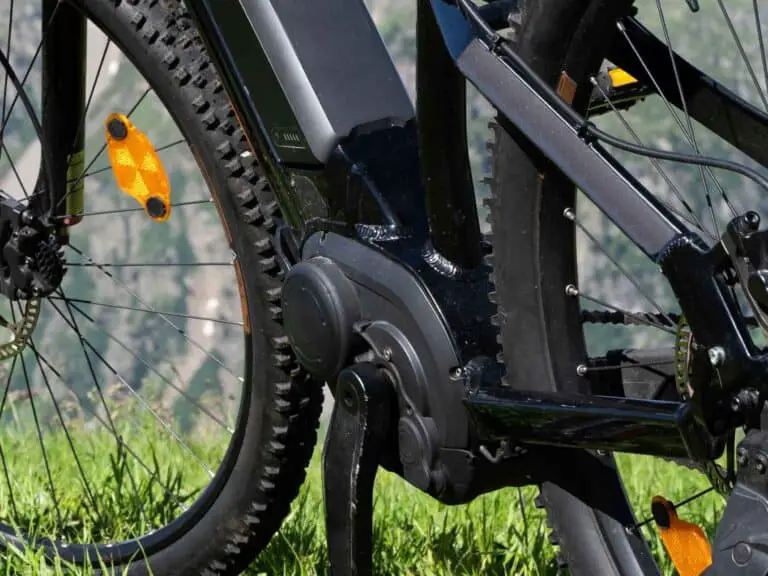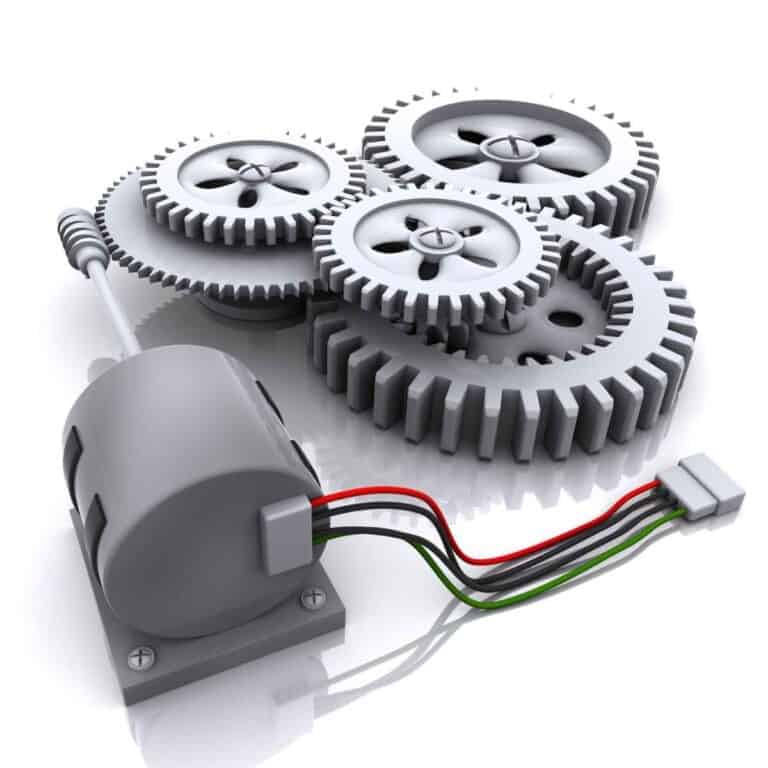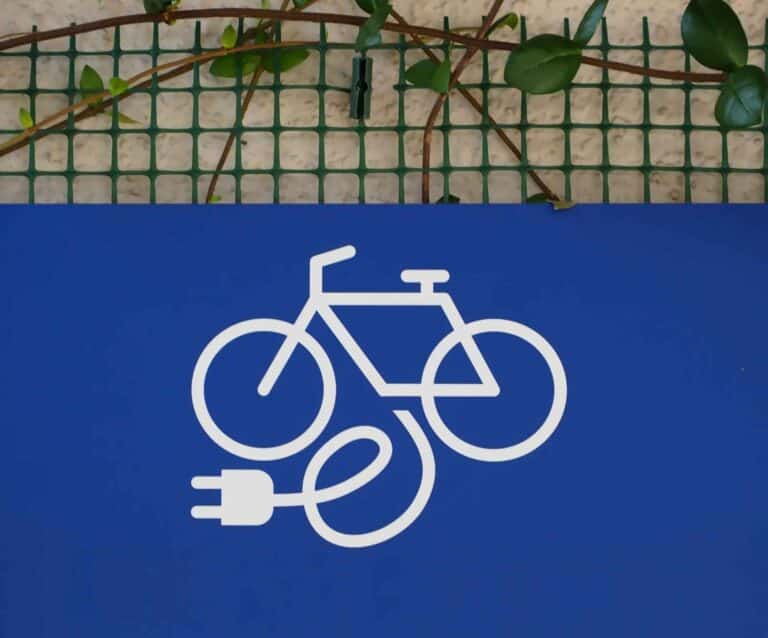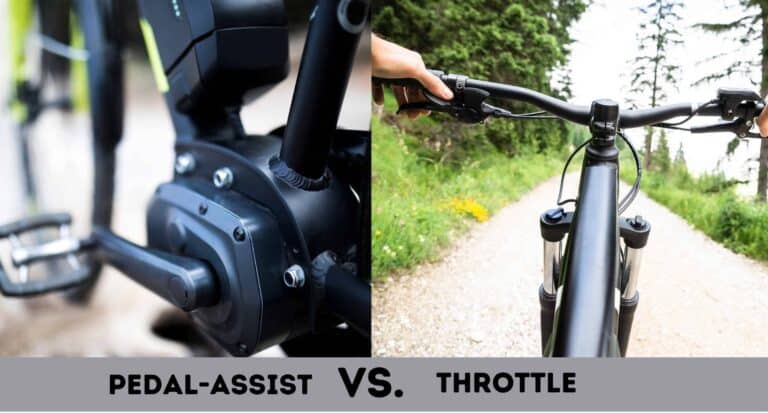24 Vs. 36 Vs. 48 Vs. 52 Volt Electric Bike (The Clear Winner)
We have all fancied having a robust high voltage electric bike. The battery’s voltage can affect the rated power of an eBike. We can’t help but wonder which performs the best—24V, 36V, 48V, or 52 Volt electric bike?
As a whole, a 52 Volt electric bike will provide the best performance between 24V, 36V, 48V and 52 Volt e-bikes. In addition, if a 24V, 36V, 48V, or 52V electric bike is paired with the same amp hours, a 52V electric bike can generate the most power and performance.
E-bike battery voltage is one of the major factors we need to consider when choosing an electric bike. This article will tackle 24V, 36V, 48V, and 52 Volt electric bikes in detail. In addition, we will compare and contrast each electric bike’s speed, power, and performance.
What Voltage Is Best For eBike?
As a general rule, 52 Volts is the best voltage for an eBike among 24V, 36V, and 48V electric bikes. This is because the 52V battery can draw the highest critical current. Thus, it provides the most efficiency and power.
Technically, more volts means more power. As a result, your eBike would be better prepared to handle more obstacles like steep inclines by using higher voltage batteries.
If you are into riding uphill, it is best to use a high voltage battery. High-performance electric bikes typically use 48V and 52V batteries. Some extreme high performance electric bikes will use even higher voltage batteries.
On the other hand, using low voltage batteries such as 24 Volt and 36 Volt is allowable if you’re riding on mostly flat terrains and smooth roads.
However, the battery’s performance of an electric bike does not entirely depend on the voltage alone. Instead, voltage is paired with amp-hour (Ah) for a battery to perform appropriately.
The voltage describes the difference in electrical potential that is contained in a battery. This is the pressure inside a battery that pushes charged electrons through the battery. In other words, voltages pushes the electric current.
On the other hand, amp-hour measures how long a battery can provide one amp of power per hour. What is important for you to know is that amp-hour is directly correlated to an electric battery’s total capacity. It is the amount of power a battery can hold and represents the theoretical mileage that a battery can help the eBike attain.
It is useful to use amp-hours as a relative comparison metric between electric bike batteries. For example, a 20Ah battery should last twice as long as a 10 Ah battery.
The table below compares different Watt-hours of batteries when 24V, 36V, 48V, and 52V battery voltage is paired with various Ah.
| Voltage | Amp-hour | Watt-hour | Amp-hour | Watt-hour | Amp-hour | Watt-hour | Amp-hour | Watt-hour |
| 24 V | 10 Ah | 240 Wh | 10.5 Ah | 252 Wh | 15 Ah | 360 Wh | 20 Ah | 480 Wh |
| 36 V | 10 Ah | 360 Wh | 10.5 Ah | 378 Wh | 15 Ah | 540 Wh | 20 Ah | 720 Wh |
| 48 V | 10 Ah | 480 Wh | 10.5 Ah | 504 Wh | 15 Ah | 720 Wh | 20 Ah | 960 Wh |
| 52 V | 10 Ah | 520 Wh | 10.5 Ah | 546 | 15 Ah | 780 Wh | 20 Ah | 1,040 Wh |
As you can see on the table, when a 24-volt battery is paired with 15 Ah, the resulting watt-hour is 360. On the other hand, when 36V is paired with 10 Ah, the result is also 360 Wh.
In both cases, 24V 15 Ah and 36V 10Ah batteries have the same watt-hour. Thus, these batteries tend to have similar battery performance.
Another example, a 48V paired with 10Ah provides the same Wh when a 24V is paired with 20Ah. So both of these batteries have 480 Wh. It means that both of these batteries offer 480 watts of power in an hour.
Here’s another example: a 48V 15Ah battery can generate 720 Wh. On the other hand, a 52V 10Ah battery provides 520 Wh.
In these cases, the 48V 15Ah battery offers better battery performance for an e-bike. However, if 52V is paired with higher Ah, the 52V battery could deliver a higher watt-hour.
Therefore, a high voltage battery cannot produce as much power if it is associated with a relatively smaller amp-hour.
So, if you’re into uphill climbing, using a high voltage battery paired with a high amp-hour is a wise decision.
If you are looking for a 36V, 48V, or 52V e-bike battery, check out these Unit Pack Power e-bike batteries on Amazon.
Which Is Better 24V Or 36V?
As a general rule, 36V is better than 24V because a 36V electric bike battery can produce more power (Watt-hour) than a 24V battery. Thus, a 36V battery can help an eBike climb up hills easier than a 24 Volt battery.
The 24V and 36V batteries can both perform well on flat roads. However, the real difference becomes apparent when using both of these batteries to climb inclines. Between the 24V and 36V batteries, a 36V battery will provide more assistance when climbing up a similar-sized slope.
Of course, since a 36V battery provides more power than a 24V battery, it is more costly. So, if your budget is tight and you’re not frequently riding your electric bike on hills, going for a 24V battery may be appropriate for your situation.
A 36 Volt battery is also much heavier than a 24 Volt battery. An electric bike’s battery makes up a significant part of an electric bike’s weight. If you are looking to make your e-bike as light as possible, using a higher voltage battery may not be ideal.
Is 36V Or 48V Better?
As a whole, a 48V battery is better than a 36V battery for use in an electric bike. Technically, a 48V battery offers more power than a 36V battery. Accordingly, a 48 Volt battery will assist more in an uphill ride when compared to the 36V eBike battery.
The 36V battery and 24V battery are typically used for commuter electric bikes. These batteries perform well on flat terrains.
However, when it comes to high-performance e-bikes, 48V batteries are what most manufacturers commonly use. That is because a 48V battery tends to provide a significant number of watts when paired with a great amp.
Therefore, suppose you have a high voltage battery paired with a highly rated amp. Then, you can expect that your electric bike will provide you with excellent power, resulting in an incredible overall performance.
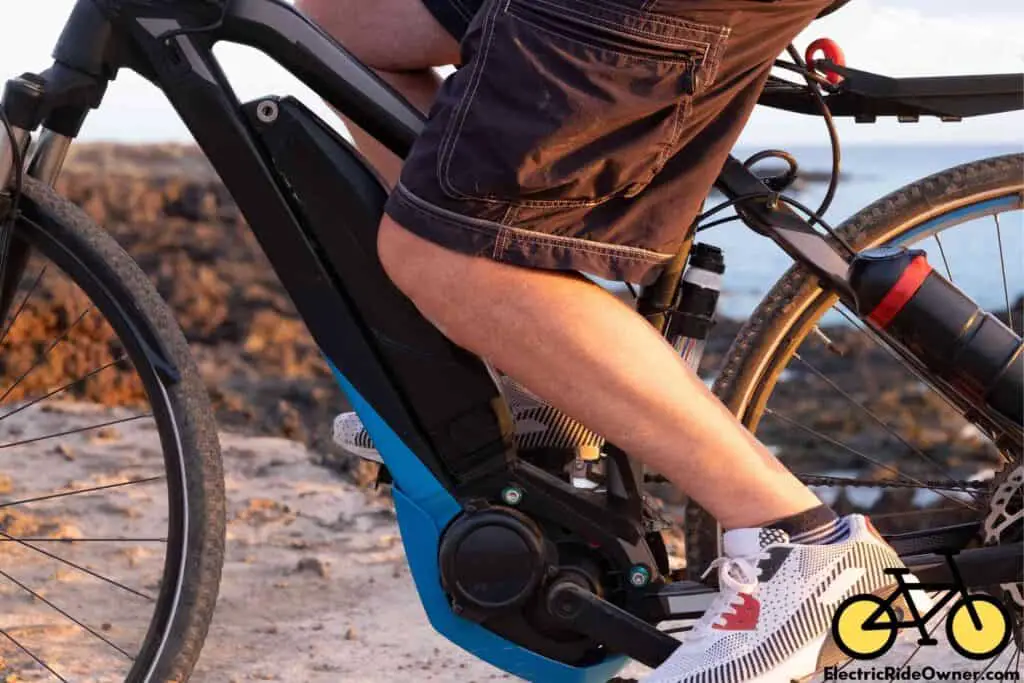
What Is The Difference Between 24V And 36V?
As a whole, the difference between the 24V and 36V batteries is their uphill performance. With a 36V battery, an electric bike is more likely to have the ability to climb up higher inclines when compared to a 24V battery.
Suppose a 24V and 36V battery is paired with the same amp-hour. Then, there is no doubt that the 36V electric bike will outperform the 24V e-bike.
Additionally, if paired with the same amp-hour, the 36V battery will probably produce higher wattage. Remember, watts are the measurement of work done. In that case, 36V electric bikes can help an electric bike reach longer distances than 24V in a similar given time. A 36V battery also will have much better performance especially when the ride consists of going up against multiple hills during your trip.
What Is The Difference Between A 36-volt And A 48-volt Electric Bike?
In total, the difference between 36-volt and 48-volt batteries is the amount of pressure under which energy is drawn from the battery to the motor. The 48V provides more pressure, making it more powerful. As a result, 48 Volts will offer more power to an e-bike, allowing it to climb inclines more easily.
You can see a significant difference between 36V and 48V if you compare them on uphill rides.
Suppose you have two e-bikes with 36V and 48V batteries, respectively. If the batteries have the same amp-hour, let’s say 15 amp-hour. The 36V 15A battery will provide 540 Wh, while the 48V 15A battery will provide 720 Wh.
If you ride these electric bikes on the same degree of inclines, the e-bike with the 48V 15A battery can likely climb the slope faster than an e-bike with a 36V 15A battery.
The weight of 36V and 48V batteries are also significantly different. Since a 48 volt is more powerful, it is also heavier than a 36-volt battery. To put it simply, the higher the voltage, the heavier the battery will likely be.
48 Volts Vs. 52 Volts Electric Bike
In total, the difference between 48-volts and 52-Volts batteries is the power and performance offered to an electric bike. The 52V e-bike is more powerful and will provide better performance than the 48V e-bike.
Both 48V and 52V batteries are used in high-performance electric bikes. They work flawlessly well on hills.
However, even though they work well on high inclines, a 52V battery still provides more overall power to a motor than a 48V battery. Additionally, suppose these batteries have the same rated Ah. In that case, a 52V battery will allow your e-bike to travel a much longer distance.
Since a 52V battery provides more power, it offers better efficiency and performance.
However, suppose you feel a 48V battery gives you more than enough power for your demands. In that case, there’s no need for you to change your 48 Volt battery to a greater voltage because higher voltage batteries are more expensive.
Interesting Fact: The word “battery” was used by Ben Franklin to describe multiple Leyden jars. Leyden jars were used as power sources during Ben’s experiments. Mr. Franklin formulated the word from the military term “battery,” which defined a group of weapons working together.
How Fast Does A 24-volt Electric Bike Go?
On average, a 24V battery of an electric bike will travel as fast as 15 mph. This is possible if a 24 Volt battery is paired with a large amp. Traveling at 15mph of speed is sufficient if you’re riding on smooth roads and your weight is within normal limits.
However, suppose you pair the 24V battery with a 15 amp-hour. Then, the battery pack can deliver you 360 watt-hours which could potentially help you reach about 18 miles an hour.
How Fast Does A 36V Electric Bike Go?
On average, a 36V electric bike can have a top speed of 15-20 mph. These electric bikes usually fall under classes 1 and 2, with a maximum speed limit of 20mph in most states.
A 36V electric bike is fast enough to ride across cities and towns. Suppose you pair the 36V battery with 12Ah. The resulting 432 watt-hours will let you reach up to 22 miles an hour.
Due to strict laws implemented by different states and countries, most e-bikes have a maximum speed of 20-28 mph. This is why it is essential to know what class your electric bike is part of.
Most electric bikes will turn off their motors automatically when you attain a certain speed. In most cases, these max speeds are set by the electric bike manufacturer to comply with local law.
Even if you have the highest voltage battery that will allow your e-bike to travel faster than 28mph, your electric bike speed will remain throttled at 20mph or 28mph.
How Can I Make My 36V eBike Faster?
On average, you can increase the speed of your electric bike by doing the following:
- Make sure to fully-charged your 36V battery
- Change your 36V battery to a higher voltage battery
- Replacing your tires
- Fill your tires with the appropriate amount of air that the manufacturer recommends.
- Lubricate your electric bike chain
Fully Charged Battery Can Allow Your eBike to Go Faster
Using a fully-charged 36V battery, you can likely reach the maximum speed your electric bike is capable of. A fully charged battery will not only deliver higher speed but will also help you travel further.

Changing Your 36V Battery To A Higher Voltage Battery Can Push Your eBike To Go Faster.
Suppose you swap your 36V battery with a 48V battery. Then, your electric bike speed will likely increase as much as 30% when compared to its previous speed.
Changing your battery to a higher voltage will deliver more watts even when paired with the same amp. Thus, making your e-bike faster and more efficient.
However, check whether your current controller can handle the higher voltage before changing to a higher-volt battery. If your current controller is not able to handle a higher voltage, you would have to change your controller as well. This will add to your overall cost.
On top of that, pay attention to the maximum speed limit of e-bikes in your state. Often times the current controller of your e-bike dictates the maximum speed you can attain. If you swap out your current controller you may inadvertently violate local and state laws. The last thing you want to do is oppose the state-mandated e-bike laws.
If you want to learn more about e-bike legality in different states, check out our article, “Are Electric Bikes Street Legal (Detailed Info: All 50 States).”
Replacing Your eBike Tires Can Increase Speed Of Your Electric Bike.
Thick fat tires can considerably slow down your e-bike speed. So, there is a high probability that your e-bike speed will increase if you change your tires to thinner ones.
However, please note that some electric bikes use specific tire thicknesses due to their usage. Thick tires are more efficient on gravel and with off-road riding conditions.
Changing your thick tires to thinner tires can put your safety at risk if the new tires are not appropriate for your riding conditions.
Is 36V Good For An Electric Bike?
As a general rule, a 36V battery is good to use on an electric bike. Although, a 36 Volt battery is not as good as a 48V voltage battery. The 36V battery is sufficient to ride an electric bike on decent-sized hills, especially if paired with an appropriate amp-hour.
If a 36V battery is paired with 15 amp-hour, it can generate 540 watt-hours, enough to climb up high slopes. A 36V battery allows your electric bike motor to generate more torque. Having increased torque allows your electric bike the ability to accelerate faster from a complete stop.
However, you should always pay attention to how steep the hills you plan on riding on are because there are inclines your e-bike may not be able to climb.
If a hill’s too steep, your 36V battery might not produce enough power for the motor to push your electric bike up the hill. In such a case, you would need to increase your pedaling to make up for the deficiency in power.
However, if you are using your electric bike to go around the town, using a 36V battery is more than enough.

How Powerful Is A 36V Battery?
As a general rule, a 36V battery can have as much as 720 Watt-hour (peak power) if paired with 20 amp-hour. The power output that your 36V battery can generate depends entirely on what amp-hour you pair to the 36 Volt battery.
Suppose 20 amp-hour is connected to the 36V battery. In that case, the 720 Wh generated can help you ride your electric bike on much higher elevated slopes.
On the other hand, if you pair 10 amp-hour to your 36V battery, the 360 Watt-hour produced are enough to operate your electric bike on flat roads. However, 360 Watt-hour may not be enough for your e-bike to climb up elevated slopes.
The 36V battery can generate high wattage if paired with a high amp-hour. However, it is always best to use a higher voltage battery if your area has many hills.
How Many MPH Is 36V?
As a whole, a 36V battery does not guarantee that you can reach a certain mph. This is because the speed of an electric bike isn’t determined by the battery’s voltage alone. Instead, the voltage is paired with amps to generate power. The power determines how fast you can travel.
So if you know the amperage and the voltage of a battery, you can calculate the max MPH the e-bike can travel.
If 36V is paired with 10 amp-hour, the resulting 360 Watt-hour can help you travel as fast as 15-20 mph. A 36V battery with a 15 amp-hour can produce 504 watts which will propel you to about 25 mph.
Remember, the voltage cannot be directly converted to mph.
How Can I Make My 48V eBike Faster?
As a whole, changing your 48V battery with a 52V or a 72V battery will make your electric bike faster. This is because the 52V and 72V have higher voltage; thus, they have more power, increasing your e-bike speed.
No doubt, higher voltage can increase the speed of your electric bike. However, always check if your controller can handle a higher voltage battery.
If you pair your 48V battery with an unsuitable controller, possible issues with your battery and motor may arise. In that case, you could lose some really expensive components of your electric bike.
Be careful using a 72V battery, as your e-bike may no longer be classified as an e-bike because of the potential speeds you could reach. Your ride may be reclassified as a moped. Different rules and regulations apply to mopeds which are oftentimes much more stringent.
On top of that, higher voltage means heavier weight. So it is also best to check if your electric bike can handle the extra battery weight.
Of course, who wouldn’t want a faster electric bike? With a speedier e-bike, you can reach your destination faster and have a lot more fun.
To learn more about different tips for speeding-up your e-bike, watch this helpful video about “10 Tips To Make Your E-bike Go FASTER!!”.
.
Can A 36V Controller Handle 48V?
As a general rule, a 36V controller can handle a 48V battery as long as your controller limits the current going through the motor. However, this may not work for some electric bikes.
Different controllers are designed differently. For example, some 36V controllers can handle a 48V battery while some cannot.
If the current going through the motor from the 48V battery isn’t controlled, the controller can heat up, leading to a blown-up fuse.
It is always best to use a compatible and matching controller for your 48V e-bike battery.
Can You Charge A 48V Battery With A 36V Charger?
As a general rule, you should not charge your 48V battery using a 36V charger. It is advisable to always use a 48V charger for charging your 48V battery.
Charging your 48V battery with a 36V charger won’t work properly. It may charge your battery slightly, but it will definitely leave your battery undercharged.
Riding an electric bike with an undercharged battery will not provide you with its maximum performance. As a result, it won’t offer you an incredible ride.
On top of that, if you keep undercharging your battery, your battery will deteriorate over time. Please note that battery replacement is costly. Buying a suitable charger is way cheaper and safer.
Whatever battery you have, it is advisable to use a compatible charger. Because as the saying goes, better safe than sorry.
“Batteries are the most dramatic object. Other things stop working, or they break, But Batteries… They Di*.”
—Demetri Martin
How Can I Reduce 48V To 36V?
As a general rule, a 48V battery of an electric bike can be reduced to a 36V battery by using either a voltage divider or a step-down converter. However, reducing your 48V to 36V requires significant knowledge.
A voltage divider is a simple and passive linear circuit that can produce an output voltage (36V) from its input voltage (48V). The voltage divider uses two series resistors to distribute the input voltage among the circuit components.
On the other hand, a step-down converter can also help to convert a higher input voltage to a lower output voltage by rapidly switching on and off the output power transistor.
Reducing a 48V battery to 36V cannot be done quickly and requires work, knowledge, and experience.
These two ways of reducing a battery’s voltage are complex and complicated, so you have to be knowledgeable concerning electronics and batteries in order to execute them appropriately. In addition, these processes would involve terms and concepts that you cannot quickly learn in just a day.
We highly recommend just buying a 36V battery if that is what you need for your e-bike rather than reducing a higher voltage battery.
How fast is a 48V 1000 watt motor?
On average, a 48V 1000 watt motor can provide a top speed of 35 mph. So having a combination of a powerful motor and high voltage can help you ride your e-bike faster. In addition, you will be able to climb inclined terrain easier.
The 48V 1000 watts motor will deliver enough power to reach much higher speeds. In addition, this type of motor will provide exceptional climbing performance, especially for heavier-weight riders.
If you have a higher particular weight requirement and engage in frequent uphill rides, this 48V 1000 watts motor would most likely be sufficient for you.
However, this motor could allow you to travel up to 35mph. As a result, it is still advisable to follow the maximum speed limit mandated in your state.
We have published a helpful article, “Electric Bike Battery Cost (A Helpful Chart),” if you are looking for the right electric bike battery for you.



